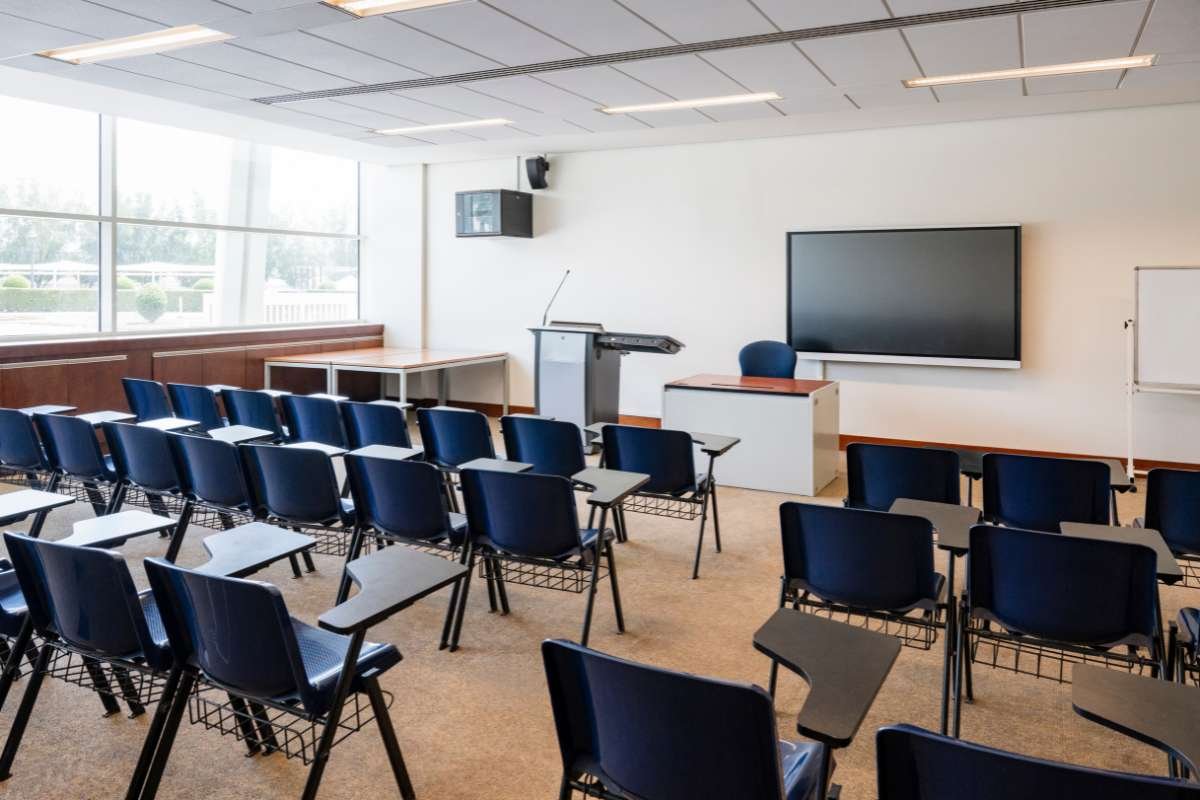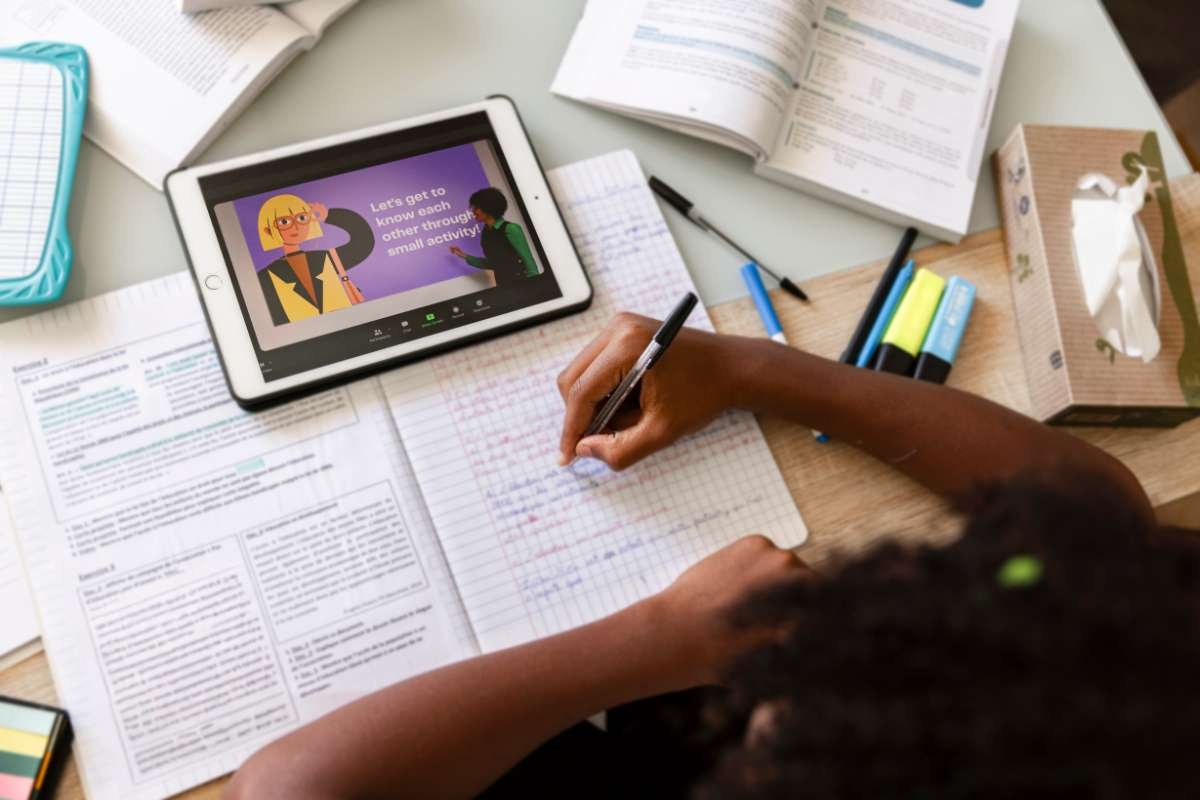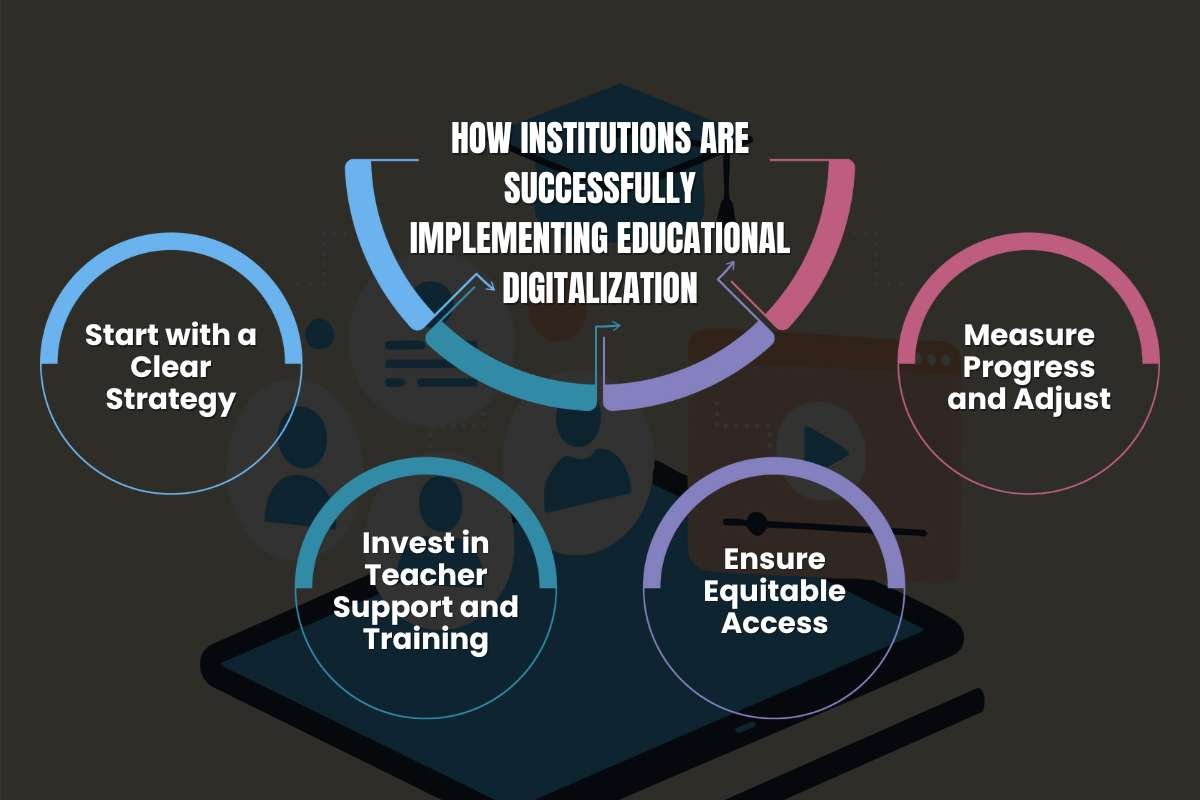Blackboards and printed textbooks are no longer the primary means of instruction in schools and universities. The way education works today is fundamentally different from what it was just a few years ago. Technology now provides students with the opportunity to learn anywhere, anytime, and in ways that best suit their needs. Teachers also have access to innovative tools that help them understand how students learn, identify the challenges they face, and pinpoint where additional support is needed. Digital transformation in education involves integrating modern technology into every aspect of how schools operate, from lessons and homework to communication and school management.
This shift is not just about having computers in classrooms or posting homework online; it’s about embracing a new approach to education. After the pandemic prompted schools to transition to online learning, many realized that technology can do much more than fill a temporary gap. It can enhance learning quality, cater to diverse learning needs, and enable teachers to focus on teaching rather than on manual tasks.
In this article, we’ll discuss what digital transformation in education truly means, why institutions are prioritizing it, and how schools are successfully implementing this shift.
Understanding Digital Transformation in Education
Academic technology integration is more than using new gadgets in classrooms. It’s a complete overhaul of how institutions operate, teach, and engage with students, touching lesson design, student interactions, teacher time management, and administrative tasks.
The core idea is to utilize technology to enhance education, making it more effective, accessible, and tailored to individual needs. An AI-powered system identifies exactly where struggling students get stuck and provides targeted help. Cloud-based platforms offer rural teachers access to high-quality educational materials. Digital transformation in education also removes barriers for students with hearing or visual impairments through text-to-speech tools and screen readers, ensuring that remote students have access to the same quality of instruction as their urban counterparts.
Why Educational Institutions Are Adopting Digital Tools Now?

Technology in education didn’t begin with the pandemic, but the pandemic accelerated schools’ progress. Once classrooms shifted online in 2020, many institutions realized that digital tools could enhance learning, not weaken it. With digital transformation in education implemented effectively, schools have seen real results.
One significant change is efficiency. Teachers used to spend hours on attendance, grading, and planning. Automation frees up that time, allowing them to focus on students and creative teaching. Administrators can also handle admissions and records more efficiently with digital systems.
Another key advantage is personalization. Not all students learn the same way. Digital transformation in education enables each student to receive lessons, practice, and feedback tailored to their individual level. It improves scores and confidence. It also fosters fairness — providing students with access to tutors, adaptive tools, and global learning opportunities, regardless of their background or ability.
Key Technologies Driving Educational Digitalization
Understanding the technologies behind digital transformation in education helps explain why this shift is happening and what makes it so powerful. These are no longer futuristic concepts; they’re actively being used in classrooms and educational institutions worldwide today.
1. Artificial Intelligence and Machine Learning
AI is the most talked-about technology in education today. AI systems can analyze a student’s work, identify patterns in their mistakes, and provide targeted recommendations for assistance. A student struggling with fractions doesn’t get the same tutorial as someone who understands fractions but has trouble with word problems. The system adapts.
AI is also helping to alleviate the grading burden that weighs down teachers. Tools powered by AI can now grade essays and open-ended responses, in addition to multiple-choice questions. This sounds impossible, but it works by learning from examples of good and bad answers. The system then provides students with detailed feedback on what they did well and where they need improvement. Teachers report saving 60 to 70 percent of their grading time with these tools.
Beyond academics, AI chatbots are handling student questions. A student wondering about college application requirements doesn’t have to wait for a counselor to have free time. An AI assistant answers immediately. For colleges, this means counselors spend less time addressing FAQs and more time addressing students with genuine problems that require human judgment and discretion.
2. Hybrid and Blended Learning Models

The hybrid learning model combines the best of in-person and online instruction. Students attend some classes in the physical classroom and complete others online. This approach has become especially popular since 2025, as it offers flexibility without compromising the connection between students and teachers.
Why does this matter? Because not every learning activity needs to happen in a classroom. A student can watch a lecture recorded by an expert at their own pace, then use their in-person class time for discussions, projects, and hands-on activities—students who learn by doing benefit massively from this approach. A chemistry student can spend their online time watching how to mix compounds safely, then come to class to actually experiment with teacher supervision.
Studies show that 85 percent of educators believe hybrid learning increases engagement. The reason is flexibility. Some students learn better in the morning, while others learn better at night. Some need quiet to focus, others concentrate better with background noise. Hybrid models enable students to select the conditions under which they learn most effectively, while maintaining a structured learning environment and teacher support.
3. Virtual and Augmented Reality
VR and AR technologies are transforming what “hands-on learning” means. A medical student used to practice surgeries only after watching others or through simulations on a flat screen. Now, they put on a VR headset and perform the same motions they’d use in a real operating room, with instant feedback on their technique. There’s no risk, no cost for mistakes, and the experience is so realistic that when they finally work on a real patient, their muscle memory and procedural knowledge are already established.
History students can explore Ancient Rome by walking through reconstructed streets. Biology students can zoom inside a cell and see how organelles work. These aren’t just impressive visuals—this type of learning leads to better retention and understanding. When students experience something immersive rather than just reading about it, the learning is more effective.
4. Cloud-Based Learning Management Systems
A learning management system (LMS) is basically the digital backbone of any school that uses technology effectively. These cloud-based platforms enable teachers to upload course materials, students to submit assignments, teachers to grade and provide feedback, and for everyone to communicate. But they do much more than that.
Cloud-based LMS platforms track which students are struggling, which assignments are too complex or too easy, and which learning materials are actually being used. This data helps administrators make better decisions about what works and what doesn’t. A system that seems reasonable in theory but is not actually used becomes apparent in the data. Resources can be shifted to approaches that students actually engage with.

Want to Bring Digital Transformation to Your Business? The Right Leadership Is Key
In this article, we’ll explore why the right leadership is key to bringing digital transformation to your business and offer insights into how to cultivate and support it.
5. Data Analytics and Insights
Digital transformation in education generates enormous amounts of data about how students learn. How much time did a student spend on each problem? Did they watch the video all the way through? Which types of practice problems did they get right? Which did they skip?
When this data is adequately analyzed, it reveals patterns. An AI system might notice that students who skip certain types of problems are 40 percent more likely to fail the final exam. Teachers can then intervene before failure happens. Some students might be identified as gifted based on how quickly they master material—they can get advanced content instead of being bored repeating material they already understand.
This data-driven approach has never been possible at scale before. A teacher could keep an eye on 10 or 20 students, but a system can track hundreds or thousands. The insights benefit every level of the organization, from individual teachers adjusting their instruction to school administrators allocating resources more effectively.
6. Generative AI and Adaptive Learning
Generative AI tools, such as ChatGPT and similar technologies, are now being integrated into educational systems. A student stuck on a math problem can get step-by-step explanations. They’re not just getting the answer—they’re getting taught how to solve that type of problem.
Adaptive learning systems use this technology to generate personalized content. A student working on essay writing doesn’t get the same prompts as everyone else. The system generates scenarios and prompts that are specifically tailored to each student’s needs for practice. If a student struggles with introductions but excels with conclusions, the system focuses on improving introductions.
Accessibility features powered by generative AI are also huge. Lectures can be automatically transcribed for students who are deaf or hard of hearing. Complex text can be automatically simplified for students with reading difficulties. Teachers can translate materials into different languages. Digital transformation in education means removing accessibility barriers that once made education impossible for students with specific disabilities.
Real Benefits of Digital Transformation in Education
Understanding why institutions are investing time and money in this transformation requires looking at actual outcomes and benefits that schools and students are experiencing.
→ Improved Student Engagement and Motivation
When learning becomes interactive and personalized, student motivation increases noticeably. A student who used to dread math class finds that the system meets them where they are and moves at their own pace. They experience success more often, which in turn builds their confidence.
Gamification incorporates game-like elements, such as points, badges, and leaderboards, making learning feel less like work and more like an achievement. This taps into what motivates humans to succeed; most people play games willingly and return to challenging games after failing. That same motivation applies to learning.
→ Better Academic Outcomes and Equitable Access
The statistics around academic improvement through digital transformation in education are significant. Schools using personalized AI learning report test score increases averaging 62 percent among students compared to traditional instruction. Knowledge retention also improves when learning is active and personalized.
Digital transformation in education is making quality education more accessible and fair. A student in Bangladesh or Nigeria now has access to world-class educational content and expert teachers. Rural students no longer accept whatever teachers are available in their local area. Students with physical disabilities get full educational access. Students who work evening shifts can take classes during the day. The barrier is now internet access rather than money, which is expanding rapidly.
→ More Effective Teacher Development
Teachers benefit from digital transformation in education by gaining better insights into what works and what doesn’t. They see exactly which lessons confuse students most. They spend less time on administrative tasks and more time on actual teaching and mentoring.
Challenges Keeping Digital Transformation from Reaching Everyone
Despite clear benefits, digital transformation in education faces real obstacles that prevent every school and every student from accessing these advantages.
1. The Infrastructure Problem
Technology requires infrastructure. It requires reliable electricity, internet access, and devices. In many parts of the world, these things aren’t guaranteed. A school in a rural area might not have dependable power. The Internet might drop constantly or be too slow to stream video. Students may not have personal devices at home, forcing them to use shared school computers during limited hours.
This creates a digital divide, where students with good access receive the benefits of personalized learning, while those without it don’t. The gap between well-resourced and poorly resourced schools actually grows wider when technology is introduced without ensuring that everyone has equal access.
2. Cost of Implementation

Even in wealthy countries, schools face budget constraints. Buying software licenses, updating hardware, training teachers, and maintaining systems all incur significant costs. A school might clearly see the benefits of digital transformation in education, but it simply can’t afford the upfront investment. Smaller schools and schools in low-income areas are most affected by this barrier.
The ongoing costs are also easy to underestimate. Software needs updates. Devices need replacement. Teachers need continued training as tools change. What seemed affordable in year one becomes a growing burden.
Read More: 5 Key Elements of Digital Transformation Payback
3. Teacher Resistance and Readiness
Teachers who’ve been doing things a certain way for 20 years sometimes view technology as a threat rather than a helpful tool. They worry about losing their role or job. They’re skeptical that technology actually helps students learn. Some just don’t feel confident using new tools.
This resistance isn’t unreasonable; many technology initiatives in education have failed because the tools were clunky, didn’t actually help, or required so much extra work that teachers went back to old ways. Building teacher buy-in for digital transformation in education requires demonstrating tangible benefits, offering comprehensive training, and ongoing support as teachers learn.
4. Data Security and Privacy
Schools handle sensitive information about minors. Parents are rightfully concerned about privacy. When a school uses cloud-based systems, student data is stored on servers it does not control. The school needs to ensure that data is protected from hackers and that the company running the system adequately protects user privacy.
Regulations like GDPR in Europe and FERPA in the United States add complexity. Schools need to ensure they’re compliant, which means understanding complex legal frameworks. Data breaches destroy trust and can harm students.
5. Finding One-Size Solutions That Actually Fit Multiple Sizes
Educational needs vary dramatically. An elite private school has different needs than a public school in a poor area. A school serving many students who speak English as a second language has different needs than a school with a homogeneous student body. A school focused on technical training needs different tools than one focused on liberal arts.
Many technology companies sell “solutions” that don’t actually work well in diverse contexts. Teachers can’t customize them to their actual needs. Students find them irrelevant to their lives. Digital transformation in education works best when solutions are customized; however, customization is expensive and requires technical expertise that most schools lack.
6. Measuring What Actually Works
Schools want to know whether a technology investment is actually helping students learn better. The challenge lies in measuring learning, which is a complex process. Test scores are easy to measure but don’t capture everything. Student engagement is easy to see, but it doesn’t guarantee learning. Schools need to invest in proper evaluation to understand what’s actually working, but many schools can’t afford this.
How Institutions Are Successfully Implementing Educational Digitalization?

Schools that have successfully implemented digital transformation in education typically follow similar patterns. Understanding these patterns helps explain what works.
- Start with a Clear Strategy: Successful schools don’t just buy the fanciest technology available. They identify specific problems they’re trying to solve, such as attendance tracking, student motivation, grading burden, or personalized support needs. With specific problems identified, they choose technology that solves those problems. The strategy guides technology choices rather than the other way around.
- Invest in Teacher Support and Training: Schools that succeed with a digital transformation in education treat teacher training as an ongoing process rather than a one-time event. Teachers get training on tools, instructional design, and continued support as they implement changes. Some schools create teacher learning communities where comfortable users help others. This peer learning is often more effective than formal training.
- Ensure Equitable Access: Schools serious about modernizing education work to ensure every student can access technology. Some distribute devices to students, create after-school access, or negotiate subsidized Internet with providers. Without this investment, digital transformation in education actually increases inequality.
- Measure Progress and Adjust: Schools track key metrics: student engagement, academic outcomes, teacher satisfaction, and resource utilization. When something isn’t working, they adjust quickly rather than assuming technology will work automatically.
Must Read: Driving Sustainable Business Success Through Digital Transformation
What Does the Future Hold?
Looking ahead to the rest of 2026 and beyond, digital transformation will continue to develop. AI will become more sophisticated and integrated. VR and AR will become more affordable and accessible. Hybrid learning models will become standard rather than experimental.
The bigger question isn’t whether digital transformation in education will continue; it clearly will. The question is whether it will be available to all students or only to those who are wealthy. Whether teachers will be supported through this change or left to figure it out on their own. Whether data will be used to help students or exploited for profit.
Educational leaders who understand these stakes are focusing not only on implementing technology but also on doing so responsibly. That means teacher training, infrastructure investment, privacy protection, and ongoing evaluation.
Conclusion
Digital transformation in education is happening now. Classrooms, teaching methods, and the way schools operate have undergone significant changes. While change requires investment and new skills, the potential is enormous. When done well, it makes learning more effective, accessible, and fair. Successful schools start with clear goals, invest in people, ensure fair access, and measure what works. Technology is just a tool; the fundamental transformation is in how humans use it.
Citations & Further Reading
- https://www.oecd.org/content/dam/oecd/en/publications/reports/2025/01/trends-shaping-education-2025_3069cbd2/ee6587fd-en.pdf
- https://digital-skills-jobs.europa.eu/en/latest/news/what-trends-are-shaping-education-2025-track-them-oecd
- https://www.unesco.org/en/weeks/digital-learning
- https://www.unesco.org/en/digital-education
- https://www.frontiersin.org/journals/computer-science/articles/10.3389/fcomp.2025.1611952/full
Thanks for Reading!
See more
Guiding Businesses Through Digital Transformation


















